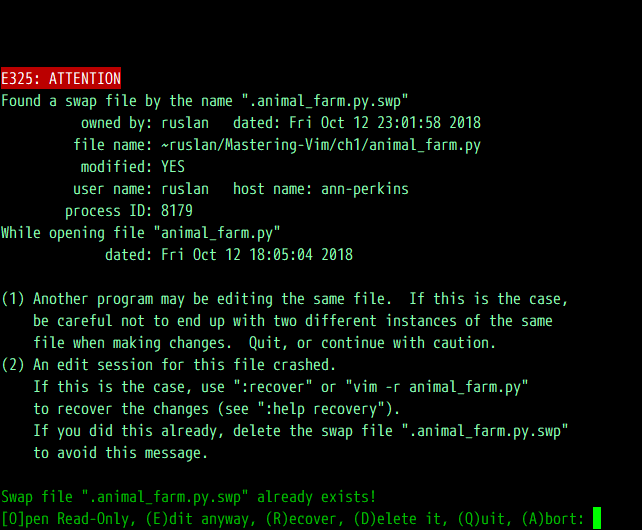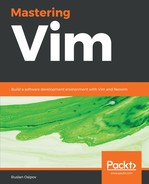By default, Vim keeps track of the changes you make to files in swap files. The swap files are created as you edit the files, and are used to recover the contents of your files in case either Vim, your SSH session, or your machine crashes. If you don't exit Vim cleanly, you'll be greeted by the following screen:

You can either hit r to recover the swap file contents, or d to delete the swap file and dismiss the changes. If you decide to recover the swap file, you can prevent the same message from showing up next time you open the file in Vim by reopening a file and running :e, and pressing d to delete the swap file.
By default, Vim creates files like <filename>.swp and .<filename>.swp in the same directory as the original file. If you don't like your file system being littered by swap files, you can change this behavior by telling Vim to place all the swap files in a single directory. To do so, add the following to your .vimrc:
set directory=$HOME/.vim/swap//
You can also choose to disable the swap files completely by adding set noswapfile to your .vimrc.
